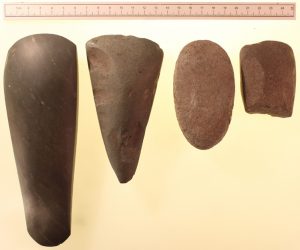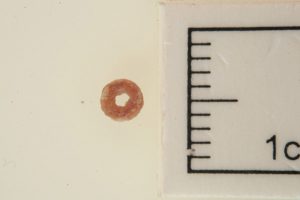On a river terrace of the north bank of the Eden are series of cropmarks detected by aerial photographic survey. Many of the cropmarks are annular or penannular in shape and are likely to be Neolithic hengiform monuments or Bronze Age round barrows. During works associated with the grubbing out of a hedge, just outside of the road corridor, a substantial ditch was detected. It corresponds to the projected circuit of a large (100m in diameter) penannular cropmark (SMR 41815). Despite a ninth millennium cal BC radiocarbon date (8720-8450 cal BC) from Prunus sp charcoal found within the basal fill of the ditch, which probably dates residual carbon, this is most likely to be a Neolithic hengiform monument. Similar monumental landscapes are known in other parts of Cumbria, the most notable being the henges of Mayburgh, King Arthur’s Round Table and Little Round Table, at Eamont Bridge (Hodgson and Brennand 2006, 39); other possible hengiform enclosures are known from aerial photographs at Gutterby and Summerhill on the Cumbrian coast (op cit, 42). The activity in the palaeochannel at the Stainton West site may be associated with the monuments, being part of a wider suite of activities undertaken in the landscape surrounding them.



